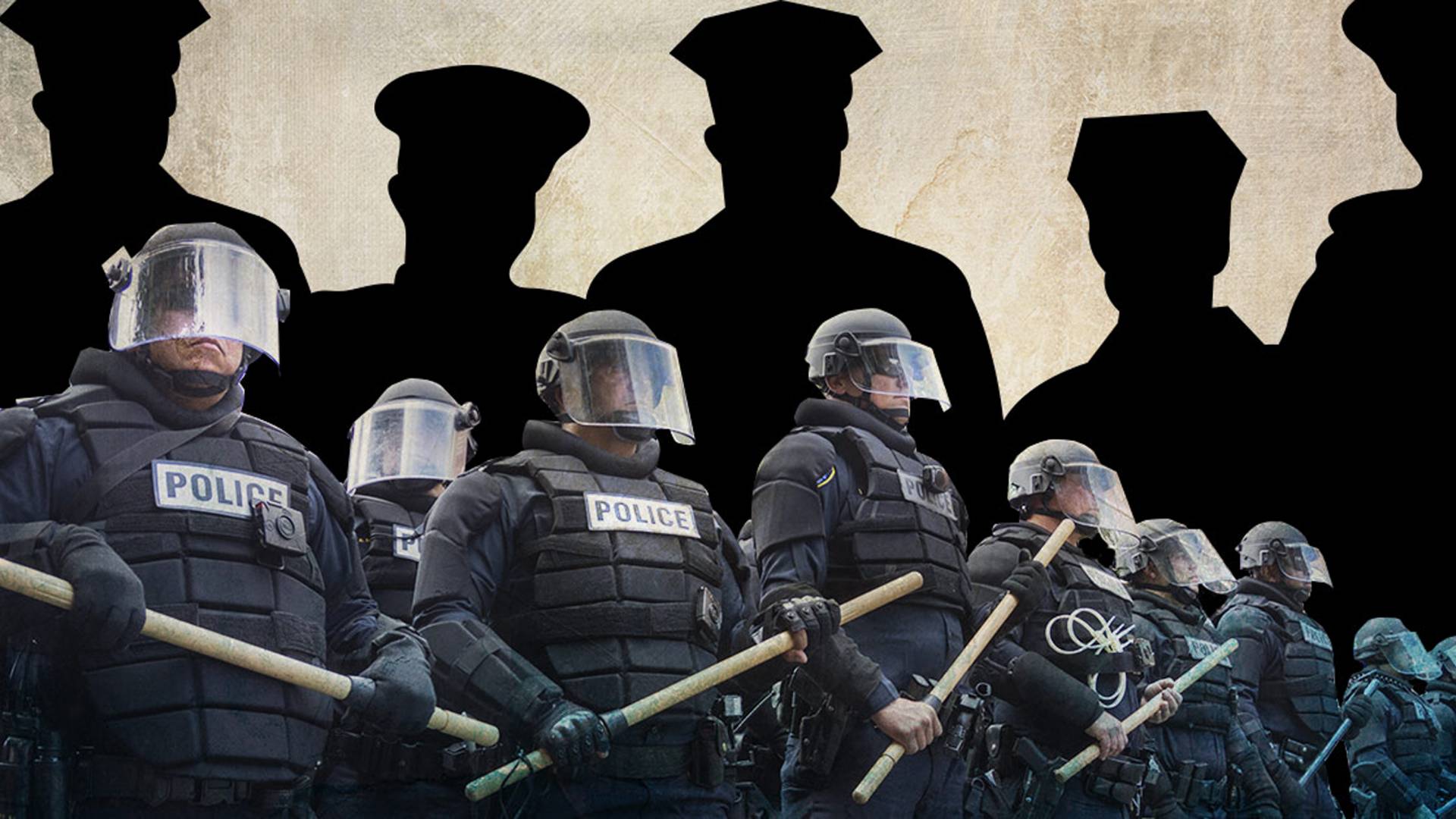
Police Militarization Escalates Police Violence
Mike Maharrey / The Tenth Amendment Center
(December 7, 2021) — The militarization of state and local police through federal government programs changed the character of policing in the United States. It has turned “protect and serve” into “command and control.” Instead of serving the community as “peace officers,” many state and local law enforcement agencies have turned into domestic military forces.
We see the images on TV news — cops in military gear, riding on armored vehicles and toting military-style weapons. Police apologists claim militarizing law enforcement agencies helps them fight dangerous criminals more effectively and that it makes the streets safer. And yet, some studies not only show these claims are dubious, but also suggest militarizing local law enforcement actually escalates the level of violence in the community.
This makes sense intuitively. If you dress police officers like soldiers and arm them like soldiers, eventually they’ll start acting like soldiers. The saying goes, “if the only tool you have is a hammer, to treat everything as if it were a nail.”
In the 1980s, the federal government began arming, funding and training local police forces, turning peace officers into soldiers to fight in its unconstitutional “War on Drugs.” The militarization went into hyper-drive after 9/11 when a second front opened up – the “War on Terror.”
Police can get military-grade weapons through a number of federal programs, including the 1033 program, and via the Department of Homeland Security through the (DHS) “Homeland Security Grant Program.” The DHS doles out over $1 billion in counterterrorism funds to state and local police each year.
According to a 2012 Senate report, this money has been used to purchase tactical vehicles, drones, and even tanks with little obvious benefit to public safety. And, according to ProPublica, “In 1994, the Justice Department and the Pentagon-funded a five-year program to adapt military security and surveillance technology for local police departments that they would otherwise not be able to afford.”
According to the Law Enforcement Support Office (LESO), As of 2020, the 1033 program alone has transferred more than $7.4 billion in military equipment to some 8,000 state and local law enforcement agencies.

Does all of this military gear on American streets cut the amount of violence?
University of Michigan professor Kenneth Lowande has extensively studied the federal 1033 program. He told Wired that the effectiveness of police militarization is questionable:
“There is no compelling evidence, right now, that arming LEAs with military-grade equipment increases or decreases crime.”
A 2018 Princeton University study showed that militarized SWAT teams were more likely to be deployed in minority communities. That study also questioned the effectiveness of militarized police. The research showed on average militarized police units “provide no detectable benefits in terms of officer safety or violent crime reduction.”
And a University of Tampa study suggests that while police militarization does not appear to reduce crime, it may increase the cycle of violence in America’s streets:
“Our research suggests that officers with military hardware and mindsets will resort to violence more quickly and often. Other research shows that when governmental responses are violent, dissidents and protestors are more likely to act violently at the site and in the future. Of course, that leads to more violence from the government creating a spiral that is hard to escape.”
Some challenged the UT study findings, but one of the coauthors told Wired that they were able to replicate the findings using more recent granular numbers.
Despite all the talk about getting “dangerous criminals off the streets,” the main function of local police militarization seems to revolve around the unconstitutional “war on drugs.” After all, wars require soldiers, and the federal government doesn’t have the manpower to fight alone. The feds need state and local police to serve as foot soldiers in their drug war. Militarization, combined with asset forfeiture cash, incentivizes the necessary cooperation.
In fact, a survey of applications made to federal programs by state and local law enforcement agencies revealed the drug war was by far the most common reason given for needing to militarize police officers.
Over the last two decades, police militarization has fundamentally changed policing. It’s made cops more prone to violent responses and less responsive to community needs. It’s time to put “peace” back into “peace officer” and end police militarization once and for all. State and local governments can do this by withdrawing from federal programs that supply military equipment to local cops.
Michael Maharrey is the Communications Director for the Tenth Amendment Center. He is from the original home of the Principles of ’98 – Kentucky and currently resides in northern Florida. See his blog archive here and his article archive here.He is the author of the book, Our Last Hope: Rediscovering the Lost Path to Liberty., and Constitution Owner’s Manual. You can visit his personal website at MichaelMaharrey.com
Posted in accordance with Title 17, Section 107, US Code, for noncommercial, educational purposes.